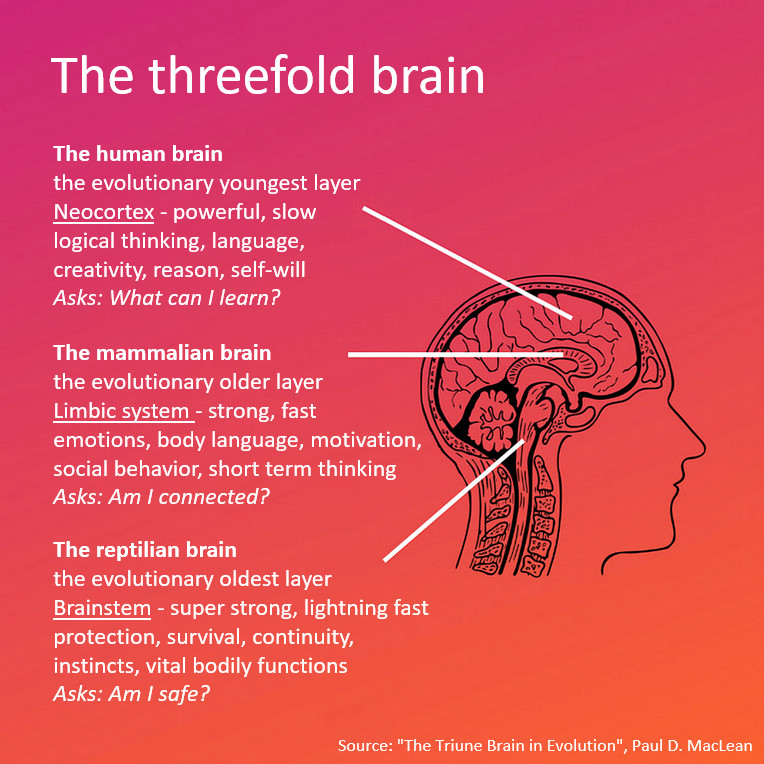To better understand our behavior, Paul D. MacLean, neuroscientist, psychiatrist, and author of "The Triune Brain in Evolution," has divided the brain into three controlling parts: the brainstem, the limbic system, and the neocortex.
When the brain perceives a threat, the upper level is largely disabled and the lower levels are maximally activated. So it's about survival and relationships before we can really think about, for example, "How can I get out of this difficult situation?"
If we want our brains to function creatively, and are able to solve complex issues, then according to MacLean's model, we need to ensure that a message of safety is sent to the brainstem and the message of connection meets the needs of the limbic system. Only then can we use our neocortex unhindered to solve difficult problems and make thoughtful decisions. A practice of transparency, wholeness, and a clear why, creates space for this, and thereby stimulates our personal development.

This article is inspired by the video "The Triune Brain", available on the YouTube channel of "Therapy in a Nutshell".